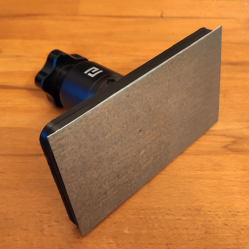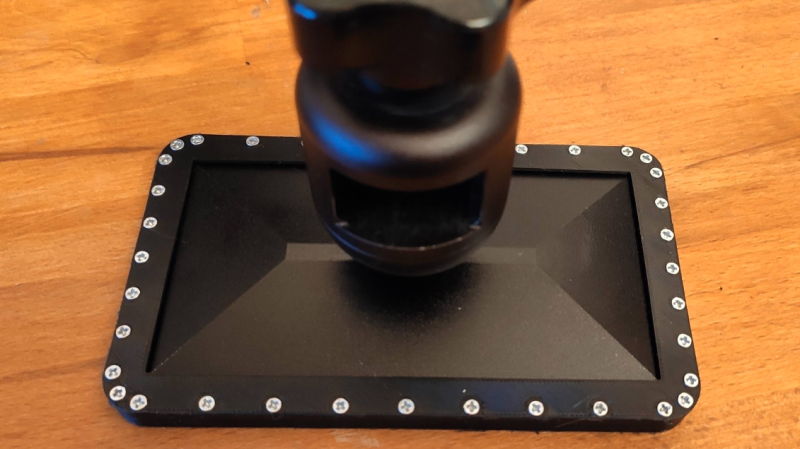Flexible steel sheets as the foundation for build platforms are used to great advantage in FDM 3D printers. These coated sheets are held flat by magnets during printing, and after printing is done the sheet (with print attached) can be removed and flexed to pop the prints free. This got [Jan Mrázek] thinking. He was pretty sure the concept could extend to the build platform on his Elegoo Mars resin printer. With a flexible build platform, troublesome prints could be more easily removed, so he non-destructively modified his printer to have a similar system. [Jan] is clear that this is only a proof of concept, but the test results were good! He printed several jobs that were known to be trouble, and they were all a piece of cake to remove.
 [Jan]’s mod consists of a 3D printed, two-piece unit that encapsulates the normal build platform and contains a few strong magnets. A thin sheet of steel sticks flat to this new piece, held in place by the magnets within, and becomes the new build platform. After a print is done, the sheet is removed and [Jan] reports that its flexibility is a big help in removing otherwise troublesome prints, such as the 3D printed solder stencil we covered recently.
[Jan]’s mod consists of a 3D printed, two-piece unit that encapsulates the normal build platform and contains a few strong magnets. A thin sheet of steel sticks flat to this new piece, held in place by the magnets within, and becomes the new build platform. After a print is done, the sheet is removed and [Jan] reports that its flexibility is a big help in removing otherwise troublesome prints, such as the 3D printed solder stencil we covered recently.
[Jan] provides his CAD model but doesn’t really recommend using it for anything other than development work. Results were promising, but there are a number of drawbacks to the prototype. For one thing, it makes the build platform thicker and the Z-axis limit switch needs to be physically lowered in order to zero the unit. Also, the thicker build platform means the volume of resin the build tank can hold is reduced. Still, the idea clearly has merit and shows there absolutely is value in hardware having a hackable design.
















Are there sla printers with a resin level sensor and resin tank that keeps the level topped up? Seems like that would be an easy fix for the reduced resin volume.
The more expensive ones do that. None of the cheap ones do (that I’ve seen so far).
Why not use something like water dispensers for birds? A bottle turned upside down which dispenses resin when level is lower than bottle entry?
My Form2 does. However, it’s not perfect, it uses some kind of capacitive sensor (no idea how it works) which sometimes fail. Apparently there was some kind of production issue on certain units, the torque of some screws is of out-of-spec which causes ground issues on the board. Mine worked perfectly for 2 or 3 years, but since last year I have to tweak the screws and chant prayers now and then when the sensor fails to make it work again.
Besides, the sensor is not the only thing you need, you also need to be able to dispense the resin. The Form has cartridges with a custom shape that are designed to be plugged upside-down behind the machine, a special rubber plug and an actuator. Using a standard bottle could prove a bit challenging to fit all inside the machine and pour the resin while avoiding spills and making sure it is easy to clean up when you change the resin type.
Overall, it’s not a trivial setup.
as long as your magnet does not cause interference with the printer itself, i guess the idea is not too bad.
I’m not experienced with these thin sheets of steel. Would it not be enough to stick 4 small neodymium cube magnets to every corner?
The issue with SLA printers is that the hardened resin wants to stick to both the build plate and the vat bottom very well. It is common now for the vat bottom to be a piece of FEP film, so that when the build plate lifts up, the hardened resin is “peeled” away from the film (which gets pulled up a bit as the plate lifts, and pops back down once the model-in-progress has been completely pulled away). There can be a considerable amount of force in this peeling process (depending upon the area occupied by the model), so if the build plate isn’t fastened well to the lifting plate, it could come off when you don’t want it to.